Concrete floor coating systems have become an essential aspect of modern construction and renovation projects. They offer a blend of durability, aesthetic appeal, and protection to concrete surfaces. Whether it’s for industrial, commercial, or residential applications, choosing the right coating can significantly impact the performance and longevity of the floor. Today we will discuss different aspects of concrete floor coatings, providing a comprehensive overview of their types, benefits, and considerations.
Types of Concrete Floor Coatings
- Epoxy Coatings: Epoxy coatings are among the most popular choices for both commercial and residential applications. They offer excellent durability, chemical resistance, and aesthetic versatility. Epoxy coatings are typically composed of two components – resin and hardener – which, when mixed, create a hard, glossy finish.
- Polyurethane Coatings: These coatings are known for their superior UV stability and flexibility. Polyurethane coatings are ideal for areas with high foot traffic or where slight floor movements are expected, such as in warehouses and garages. They provide a smooth, high-gloss finish and are available in various colors.
- Acrylic Sealers: Acrylic sealers are often used for decorative purposes. They provide a clear, glossy finish that enhances the color and texture of the underlying concrete. Acrylic sealers are easy to apply and dry quickly, making them suitable for both indoor and outdoor applications.
- Polyaspartic Coatings: Polyaspartic coatings are a relatively new technology that offers quick curing times and high durability. They are often used in industrial settings where downtime needs to be minimized. Polyaspartic coatings can be applied in a wide range of temperatures and are resistant to UV rays and chemicals.
- Specialty Coatings: Besides the common types, there are specialty coatings designed for specific applications, such as anti-static coatings for electronics manufacturing facilities, or antimicrobial coatings for hospitals and food processing plants.
- Comparison: Each type of coating has its own set of advantages and limitations. Epoxy is strong and versatile but can yellow under UV light. Polyurethane is UV stable but less chemical-resistant than epoxy. Acrylic is decorative but not as durable, and polyaspartic offers rapid curing but can be more expensive.
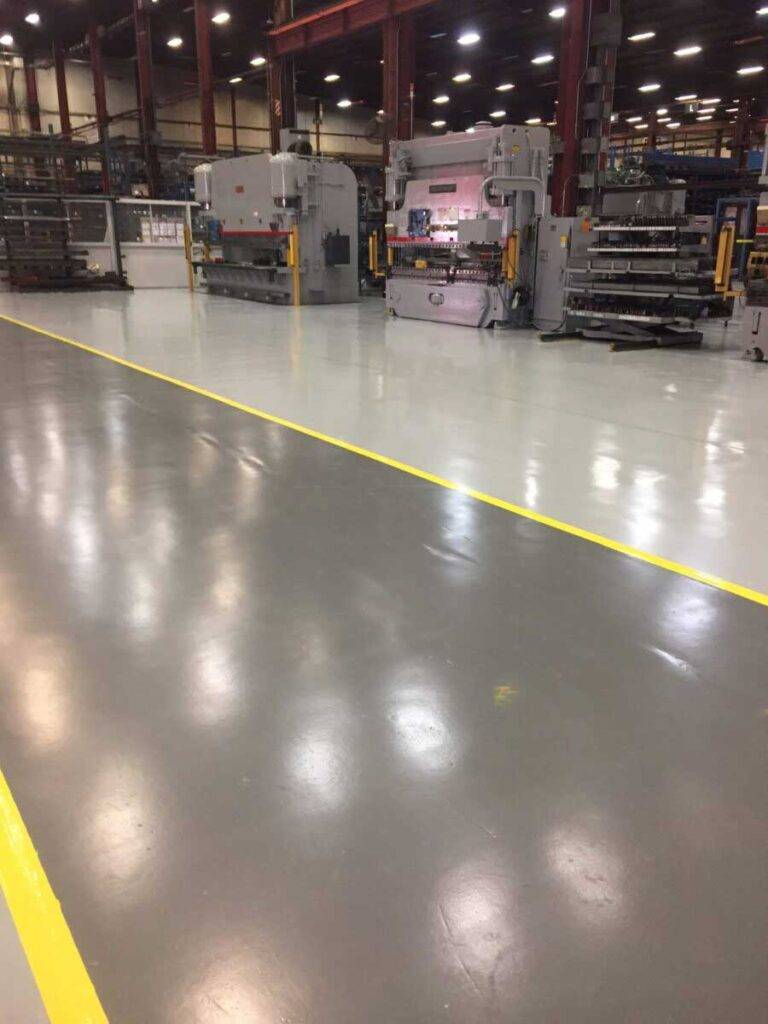
Epoxy Coating Systems
Epoxy coatings are highly favored for their robustness and versatility. They are particularly popular in industrial and commercial environments but are also suitable for residential applications.
Composition and Chemistry: Epoxy coatings consist of a resin and a hardener. When these components are mixed, a chemical reaction occurs, resulting in a rigid plastic material that is strong and durable. This reaction forms a solid bond to the concrete surface, providing a long-lasting finish.
Application Process: The application of epoxy coatings involves several steps, including surface preparation, mixing, and application. The concrete surface must be clean, dry, and free of any contaminants. The epoxy mixture is then applied using rollers or brushes and left to cure for a specified period.
Advantages: One of the main advantages of epoxy coatings is their high durability. They are resistant to abrasion, chemicals, and impacts, making them ideal for high-traffic areas. Epoxy coatings also offer aesthetic versatility, with options for various colors, patterns, and finishes.
Limitations: Despite their benefits, epoxy coatings have some limitations. They can become yellow or chalky when exposed to UV light for extended periods. Additionally, the curing process can take several days, during which the area must be kept free of traffic and contaminants.
Uses in Different Environments: Epoxy coatings are used in a wide range of environments, including industrial warehouses, commercial kitchens, garages, and even residential basements. Their versatility makes them suitable for areas requiring a strong, durable, and easy-to-clean surface.
Maintenance and Longevity: Maintaining epoxy-coated floors is relatively straightforward, involving regular sweeping and mopping. With proper care, epoxy floors can last for many years, making them a cost-effective flooring solution in the long run.

Polyurethane Coatings
Polyurethane coatings are another popular option for concrete floors, known for their flexibility, UV stability, and aesthetic appeal.
Composition and Properties: Polyurethane coatings are made from polymer resins that create a flexible yet durable surface. This flexibility allows them to withstand minor floor movements and impacts without cracking, making them suitable for areas with heavy foot traffic.
UV Stability: One of the key advantages of polyurethane coatings is their resistance to UV rays. Unlike epoxy, which can yellow under sunlight, polyurethane maintains its color and clarity over time, making it ideal for outdoor applications or areas with significant natural light.
Application Techniques: The application process for polyurethane coatings is similar to that of epoxy, involving surface preparation, mixing, and application. However, polyurethane coatings often require multiple layers to achieve the desired thickness and durability.
Durability and Performance: Polyurethane coatings offer excellent resistance to abrasion, chemicals, and staining. They are also easier to clean and maintain compared to other types of coatings, making them suitable for both commercial and residential settings.
Aesthetic Options: Polyurethane coatings are available in a variety of finishes, including matte, satin, and high-gloss. They can also be tinted to match specific colors, providing a wide range of design possibilities.
Environmental Considerations: Modern polyurethane coatings are formulated to be low in volatile organic compounds (VOCs), making them a more environmentally friendly choice. This is particularly important in residential settings where indoor air quality is a concern.
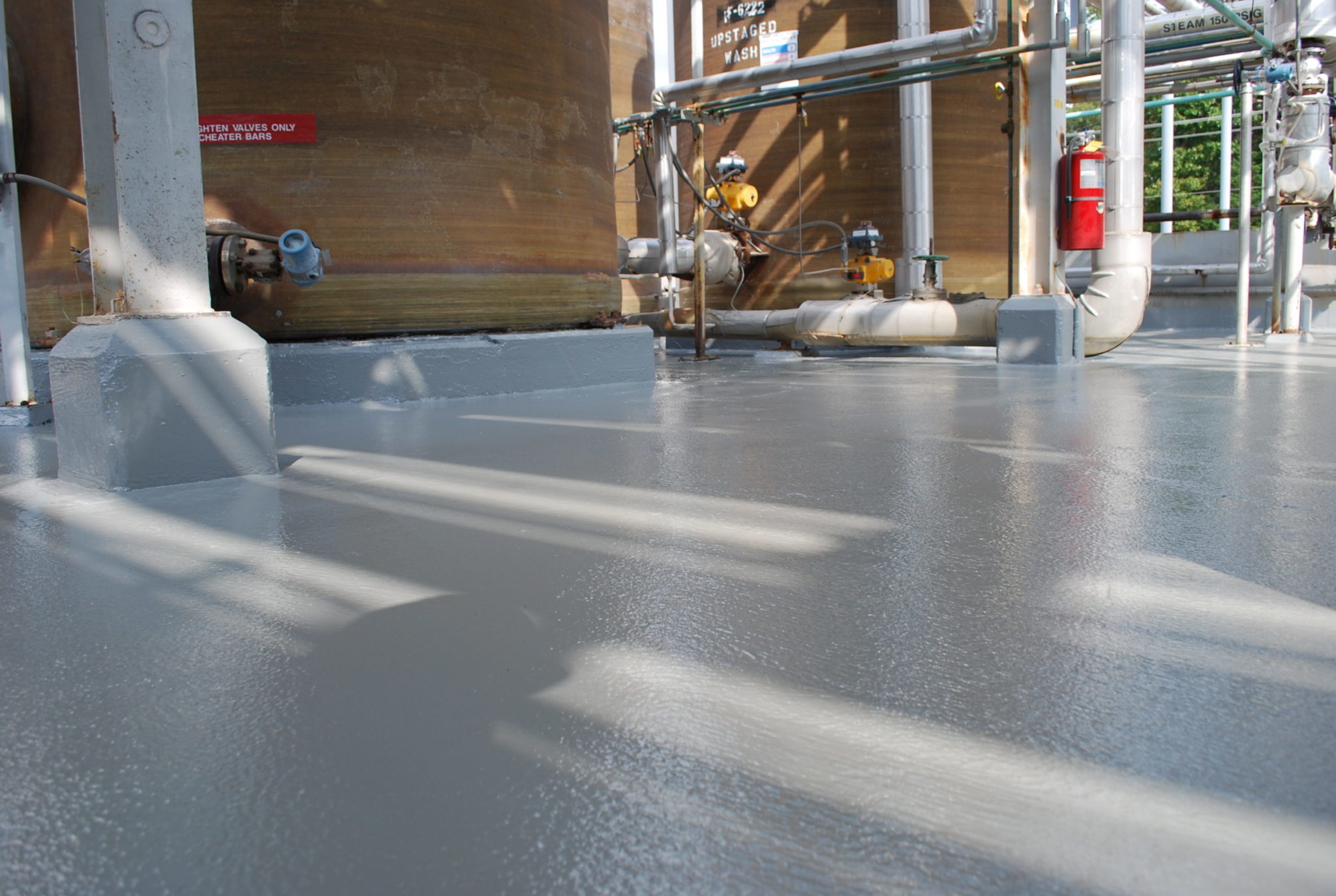
Acrylic Sealers
Acrylic sealers are commonly used for decorative concrete applications, providing a clear, protective layer that enhances the appearance of the floor.
Types of Acrylic Sealers: Acrylic sealers come in two main types: water-based and solvent-based. Water-based acrylic sealers are more environmentally friendly and have lower VOC levels, while solvent-based sealers offer a higher level of durability and gloss.
Application Methods: Applying acrylic sealers is a straightforward process that involves cleaning the concrete surface, applying the sealer with a roller or sprayer, and allowing it to dry. Depending on the product, multiple coats may be necessary to achieve the desired finish.
Decorative Enhancements: Acrylic sealers are often used to enhance the appearance of decorative concrete. They can bring out the colors and patterns in stamped, stained, or colored concrete, providing a rich, glossy finish that enhances the overall aesthetic.
Protection and Durability: While acrylic sealers provide a level of protection against moisture, stains, and UV rays, they are not as durable as epoxy or polyurethane coatings. They are best suited for areas with moderate traffic and exposure.
Maintenance and Reapplication: Acrylic-sealed floors require regular maintenance, including sweeping and mopping to remove dirt and debris. Over time, the sealer may wear down and require reapplication to maintain its protective properties and appearance.
Environmental Impact: Water-based acrylic sealers are a more environmentally friendly option compared to their solvent-based counterparts. They have lower VOC levels and are safer to use indoors, making them a popular choice for residential applications.
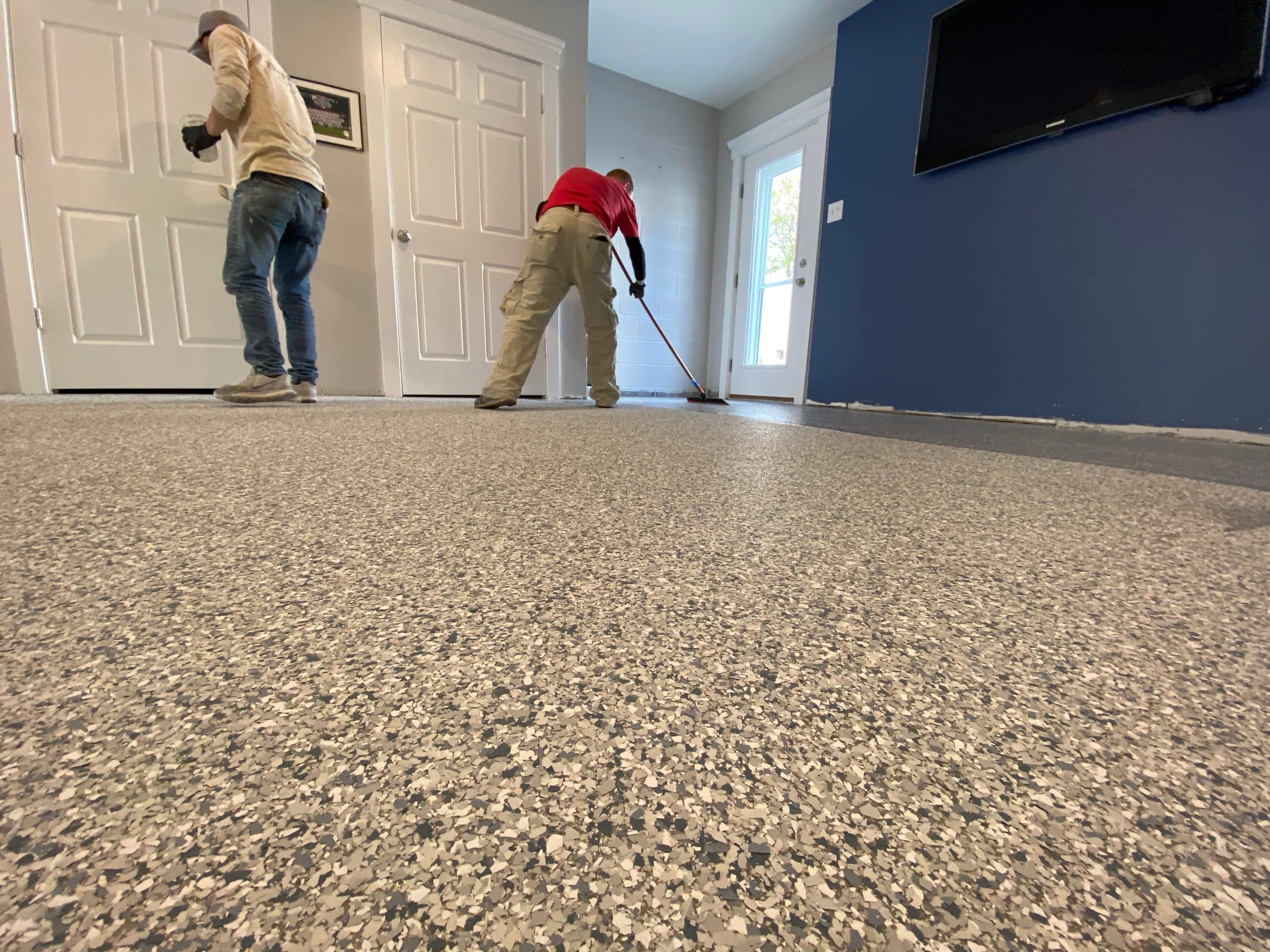
Polyaspartic Coatings
Polyaspartic coatings are a newer technology that offers several advantages over traditional epoxy and polyurethane coatings.
Rapid Curing: One of the most significant benefits of polyaspartic coatings is their rapid curing time. Unlike epoxy, which can take several days to fully cure, polyaspartic coatings can be ready for use in just a few hours. This makes them ideal for projects with tight deadlines.
Durability and Flexibility: Polyaspartic coatings offer excellent durability and flexibility, making them suitable for a wide range of applications. They are resistant to abrasion, chemicals, and UV rays, ensuring a long-lasting finish that can withstand heavy use.
Application Versatility: Polyaspartic coatings can be applied in a wide range of temperatures, from very low to very high, making them suitable for various climates and conditions. This versatility allows for year-round application, even in challenging environments.
Aesthetic Options: Like epoxy and polyurethane, polyaspartic coatings are available in various colors and finishes. They can be customized to achieve different decorative effects, including metallic and flake finishes, providing a high level of design flexibility.
Environmental Considerations: Polyaspartic coatings are formulated to be low in VOCs, making them a more environmentally friendly option. They also have a longer lifespan than some other coatings, reducing the need for frequent recoating and minimizing environmental impact.
Cost and Accessibility: While polyaspartic coatings tend to be more expensive than traditional epoxy and polyurethane coatings, their durability and rapid curing time can offset the higher initial cost. They are becoming more widely available as technology advances and their benefits become more recognized.

Benefits of Concrete Floor Coatings
Concrete floor coatings offer a multitude of benefits, making them a popular choice for both residential and commercial applications.
Enhanced Durability: One of the primary benefits of concrete floor coatings is enhanced durability. Coatings like epoxy and polyurethane create a hard, resilient surface that can withstand heavy foot traffic, impacts, and abrasions. This durability extends the lifespan of the concrete, reducing the need for frequent repairs and replacements.
Aesthetic Appeal: Concrete coatings significantly improve the appearance of the floor. They come in various colors, patterns, and finishes, allowing for customization to match any decor or design scheme. Decorative techniques such as metallic finishes, color flake systems, and stamped patterns can transform a plain concrete floor into a visually striking feature.
Chemical and Stain Resistance: Many concrete coatings provide excellent resistance to chemicals, oils, grease, and stains. This makes them ideal for environments such as garages, workshops, and industrial facilities where spills are common. The smooth, non-porous surface of coated concrete also makes cleaning and maintenance easier.
Safety and Slip Resistance: Slip-resistant additives can be incorporated into concrete coatings to improve traction and safety, especially in areas prone to moisture or spills. This is crucial for environments where slip-and-fall accidents are a concern, such as kitchens, bathrooms, and commercial spaces.
UV Stability: UV stability is another significant benefit, especially for outdoor applications or areas with large windows. Coatings like polyurethane and polyaspartic maintain their color and clarity over time, resisting yellowing or fading caused by sunlight exposure.
Cost-Effectiveness: While the initial cost of installing a concrete coating may be higher than traditional flooring options like carpet or vinyl, the long-term cost-effectiveness is undeniable. Coated concrete floors require minimal maintenance and have a longer lifespan, resulting in lower lifetime costs.
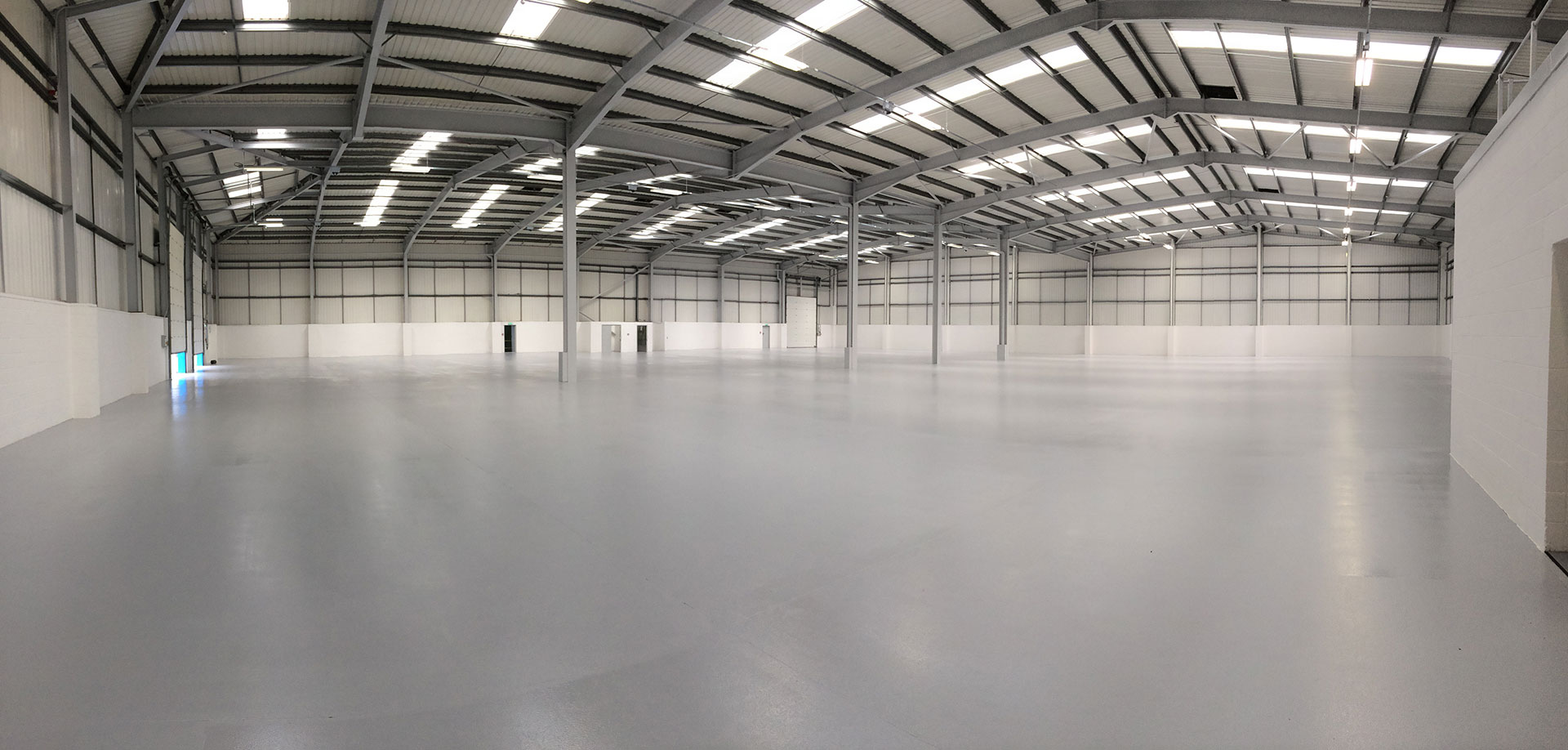
Durability and Lifespan of Different Coatings
The durability and lifespan of concrete floor coatings vary depending on the type of coating used, the application method, and the level of maintenance. Here’s an overview of how different coatings measure up in terms of durability:
Epoxy Coatings: Epoxy coatings are renowned for their durability. When properly applied and maintained, they can last up to 7-10 years or more in high-traffic areas. Their strong bond with concrete makes them resistant to abrasion, chemicals, and impacts. However, exposure to UV light can cause yellowing and degradation over time unless UV-stable topcoats are applied.
Polyurethane Coatings: Polyurethane coatings offer excellent durability, often outperforming epoxy in terms of UV stability. They can withstand heavy foot traffic and are more flexible, making them less prone to cracking or peeling. With proper maintenance, polyurethane coatings can last 5-7 years or longer before requiring recoating.
Acrylic Sealers: Acrylic sealers provide a moderate level of durability. They are more susceptible to wear and tear compared to epoxy and polyurethane coatings and may require more frequent recoating, especially in high-traffic areas. With proper care, acrylic-sealed floors can last 2-5 years.
Polyaspartic Coatings: Polyaspartic coatings are known for their rapid curing and exceptional durability. They have a lifespan similar to epoxy coatings but offer the advantage of quicker return-to-service times. Polyaspartic coatings can last 7-10 years or more with proper maintenance, making them a long-lasting option for various environments.
Factors Affecting Lifespan: The lifespan of concrete coatings is influenced by factors such as surface preparation, application quality, environmental conditions, and maintenance practices. Properly preparing the concrete surface, applying the recommended number of coats, and following manufacturer guidelines for cleaning and maintenance are crucial to maximizing the longevity of any coating system.
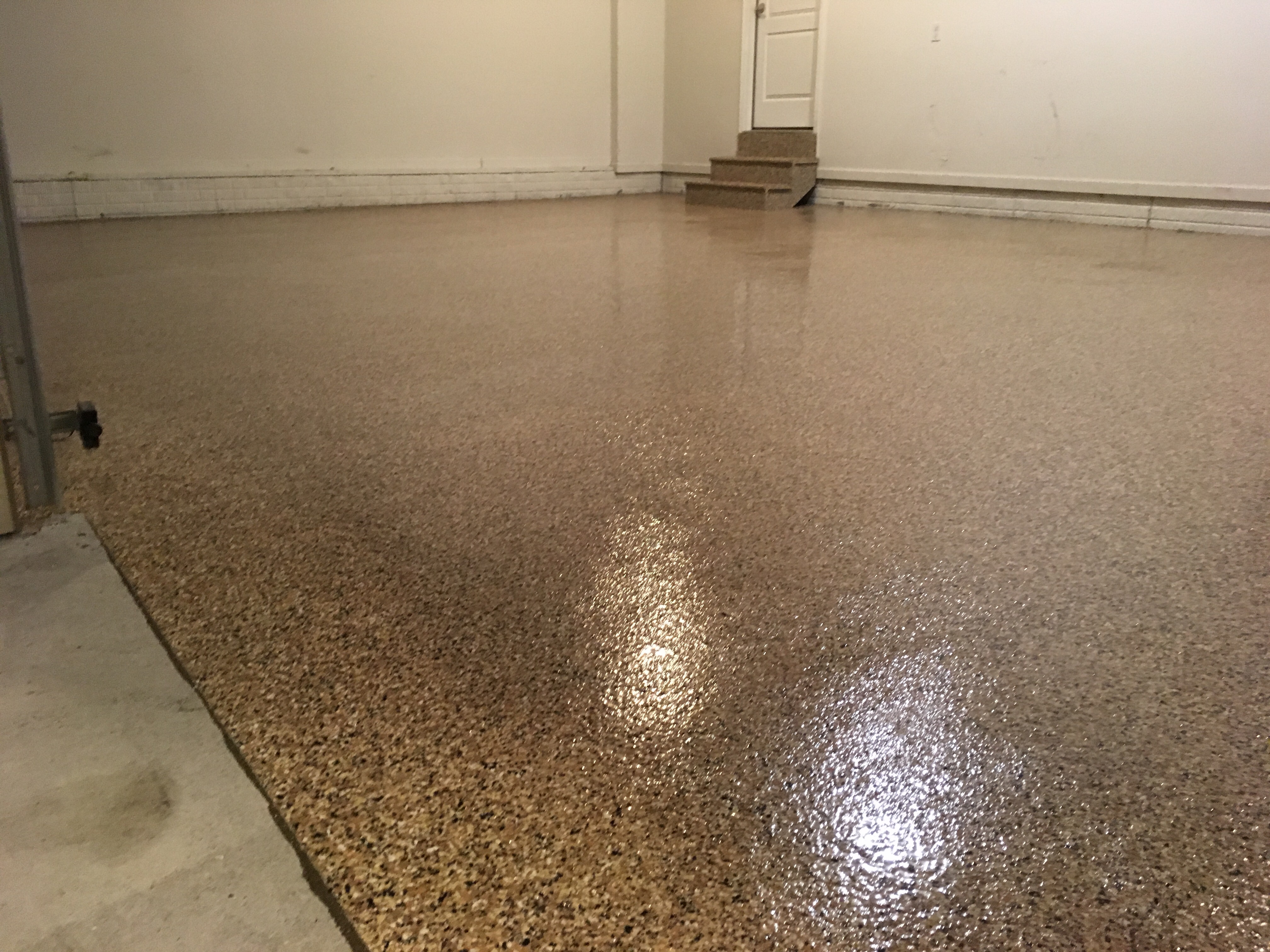
Slip-Resistant Coating Options
Slip resistance is a critical consideration for many environments to ensure safety, especially in areas prone to moisture or spills. Various options are available to enhance the slip resistance of concrete floor coatings:
Textured Finishes: Adding texture to the surface of the coating can improve traction. This can be achieved by broadcasting aggregate materials onto the wet coating or using textured rollers during application.
Non-Slip Additives: Non-slip additives, such as silica sand or aluminum oxide particles, can be mixed into the coating before application. These additives create a rougher surface that enhances grip and reduces the risk of slipping.
Gritty Sealers: Some sealers and coatings come pre-mixed with gritty materials that provide a textured finish. These coatings offer a balance between slip resistance and ease of maintenance, making them suitable for both indoor and outdoor applications.
Stamped or Textured Concrete: For decorative applications, stamped or textured concrete can be sealed with slip-resistant coatings. These coatings preserve the aesthetic appeal while improving safety by minimizing slip hazards.
Regular Maintenance: Keeping the floor clean and free of debris is essential for maintaining slip resistance. Regular sweeping and mopping prevent the buildup of contaminants that can reduce traction.
Code Compliance: In commercial and public buildings, it’s crucial to ensure that the slip resistance of coatings meets or exceeds regulatory standards to promote safety and reduce liability risks.

Decorative Concrete Coating Techniques
Decorative concrete coatings allow for creativity and customization, transforming plain concrete into visually appealing surfaces. Here are some popular decorative techniques:
Stained Concrete: Acid stains or water-based stains can be applied to concrete to create rich, variegated colors that penetrate the surface. Stained concrete offers a natural, mottled appearance that enhances the beauty of the underlying concrete.
Stamped Concrete: Stamped concrete replicates the look of materials such as stone, brick, or tile. Rubber stamps are pressed into the wet concrete to create textures and patterns, which are then sealed with a protective coating to enhance durability and aesthetics.
Colored Concrete: Integral pigments can be added to the concrete mix before pouring to achieve uniform color throughout the slab. This method provides long-lasting color that won’t wear away like surface treatments.
Overlay Systems: Concrete overlays are thin coatings applied over existing concrete to repair damage or change the appearance. Overlays can be stamped, stained, or textured to mimic various materials or create custom designs.
Epoxy Flake Systems: Epoxy flake systems involve scattering colored vinyl flakes onto the wet epoxy base coat. The flakes create a decorative pattern or texture and provide additional traction. A clear topcoat seals the flakes and enhances durability.
Polished Concrete: Polishing concrete involves grinding the surface with progressively finer grits of diamond abrasives until a smooth, glossy finish is achieved. Dyes or stains can be applied during the polishing process to add color and depth.
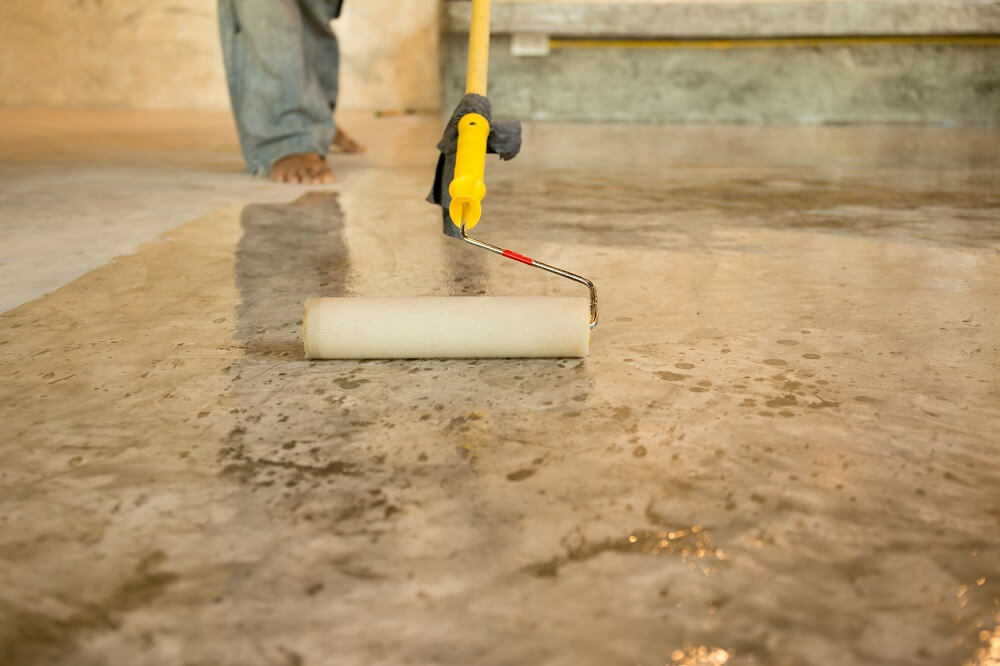
Application Methods and Tools
The successful application of concrete floor coatings requires careful preparation, proper technique, and the right tools. Here’s an overview of common application methods and tools used for different types of coatings:
Surface Preparation: This is a crucial step that involves cleaning the concrete surface thoroughly to remove dirt, oil, grease, and any existing coatings. Methods include mechanical grinding, shot blasting, or chemical etching to create a clean, roughened surface that promotes adhesion.
Mixing and Application: Depending on the type of coating, mixing ratios and application techniques vary:
- Roller Application: Suitable for epoxy, polyurethane, and acrylic coatings. A high-quality roller with a long nap is used to apply the coating evenly over the surface.
- Spray Application: Often used for polyaspartic coatings due to their rapid curing time. Sprayers ensure a uniform application and can cover large areas quickly.
- Squeegee Application: Used for applying thicker coatings like epoxy and polyurethane. A squeegee helps spread the material evenly and smooth out any imperfections.
- Trowel Application: For thicker coatings or overlays, such as decorative concrete systems. Trowels ensure an even distribution and can create textured finishes.
Tools and Equipment:
- Mixing Equipment: Typically includes mixing paddles or mechanical mixers to ensure thorough blending of epoxy, polyurethane, or polyaspartic components.
- Application Tools: Such as rollers (with appropriate nap length), brushes, sprayers (airless or HVLP), and trowels for spreading and smoothing the coating.
- Safety Gear: Personal protective equipment (PPE) such as gloves, goggles, respirators, and appropriate clothing to protect against chemicals and airborne particles.
Temperature and Humidity Considerations: Depending on the coating type, ambient temperature, and humidity levels can impact application and curing times. Manufacturers’ guidelines should be followed to achieve optimal results.
Cleanup: Tools and equipment used for application should be cleaned immediately after use with appropriate solvents or cleaners recommended by the coating manufacturer to maintain their effectiveness and prolong their lifespan.
Professional Installation: For complex projects or specialty coatings, hiring a professional contractor with experience in concrete coatings ensures proper application, adherence to manufacturer specifications, and long-term performance.

Maintenance and Cleaning of Coated Floors
Proper maintenance and regular cleaning are essential to preserve the appearance, durability, and performance of coated concrete floors. Here’s a guide to effective maintenance practices:
Daily Cleaning: Sweep or dust mop the floor daily to remove dirt, dust, and debris. This prevents scratches and abrasions that can dull the surface over time.
Routine Cleaning: Use a neutral pH cleaner or specially formulated concrete floor cleaner diluted with water to mop the floor periodically. Avoid harsh chemicals or abrasive cleaners that can damage the coating.
Stain Removal: Promptly clean up spills using a soft cloth or mop and mild detergent. Avoid using acidic or caustic cleaners that can etch or discolor the coating.
Protective Measures: Place mats or rugs at entryways to trap dirt and moisture before they reach the coated floor. Use furniture pads or coasters to prevent scratching and wear from heavy furniture.
Avoidance of Abrasives: Refrain from using abrasive cleaning tools such as steel wool or abrasive scrub brushes, as they can scratch and wear down the coating.
Periodic Maintenance: Depending on the type of coating and level of traffic, periodic maintenance may include:
- Recoating: Apply a fresh coat of sealer or topcoat as recommended by the manufacturer to maintain protection and enhance appearance.
- Spot Repairs: Address any areas of damage or wear promptly to prevent further deterioration of the coating.
- Professional Maintenance: Periodic professional cleaning and maintenance can extend the lifespan of the coating and ensure it continues to perform effectively.
Inspection and Assessment: Regularly inspect the coated floor for signs of wear, delamination, or damage. Addressing issues early can prevent costly repairs and prolong the lifespan of the coating system.

Related Posts:
- Interior Concrete Floor Paint Ideas
- Concrete Floor Epoxy Crack Filler
- Concrete Floor Basement Ideas
- Painting Concrete Floor With Epoxy
- Outdoor Concrete Floor Paint Ideas
- Concrete Floor Painting Tips
- Outdoor Concrete Floor Finishes
- Non Slip Concrete Floor
- Concrete Floor Epoxy Coating
- Outdoor Concrete Floor Tiles